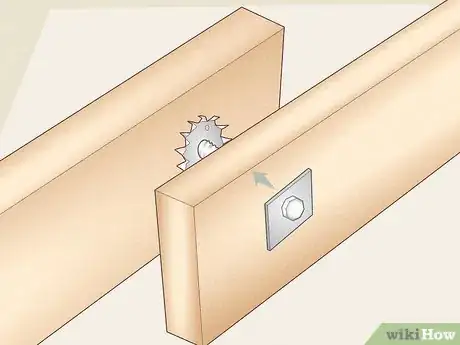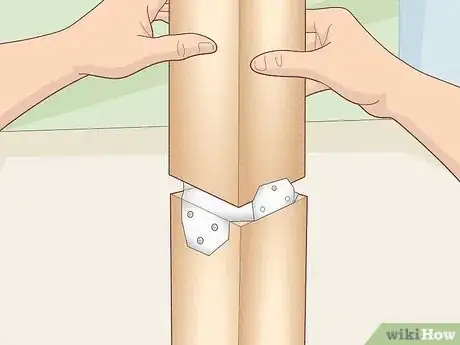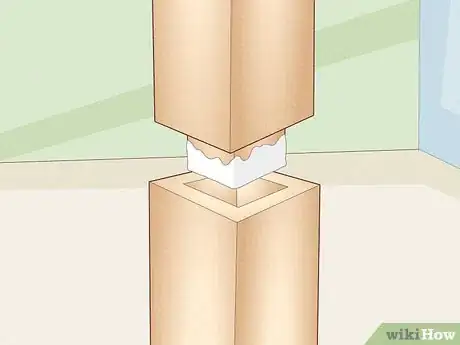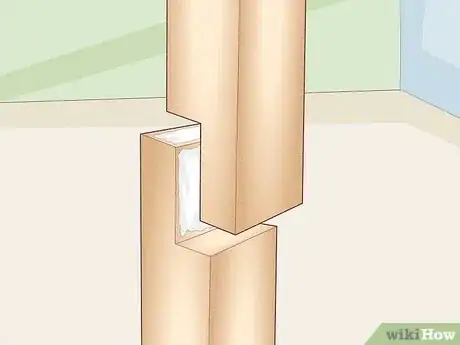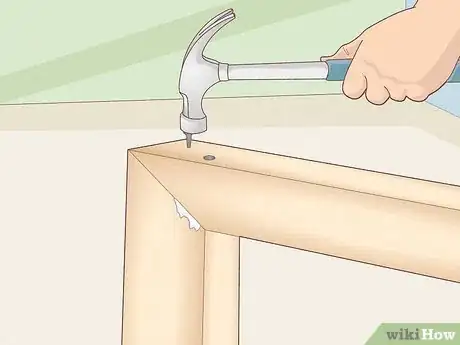This article was co-authored by wikiHow Staff. Our trained team of editors and researchers validate articles for accuracy and comprehensiveness. wikiHow's Content Management Team carefully monitors the work from our editorial staff to ensure that each article is backed by trusted research and meets our high quality standards.
This article has been viewed 44,121 times.
Learn more...
There are many reasons you might want to join timber beams together, such as when 1 beam isn’t long enough on its own or when 2 beams meet on top of a post. There are plenty of ways you can do this using tried-and-true woodworking techniques. We’ve put together this helpful Q and A article to give you an idea of some of the best, most secure ways to connect beams in different scenarios.
Steps
How do you combine two beams on a post?
-
1Secure the beams in a metal beam bracket. Choose a beam bracket that matches the width of the post and the combined thickness of your 2 pieces of timber. Put it on top of the post and drive wood screws or structural nails through the holes in the sides of the bracket into the post. Set the 2 beams into the top of the bracket, next to each other, and put screws or nails through the sides of the bracket into the beams.[2]
- For example, if you’re connecting 2 2 in (5.1 cm) thick beams to a 5 in (13 cm) by 5 in (13 cm) post, use a beam bracket that is 4 in (10 cm) wide on 1 side and 5 in (13 cm) wide on the other.
- This is a good choice when you just want to use commercial hardware and not do any extra measuring or cutting.
- The end result of this is a post with a metal bracket on top of it holding the beams in place in the center of the top of the post.
-
2Bolt the beams into a notch at the top of the post. Cut a notch into the top of the post using a circular saw that matches the height of the beams and that is as deep as the combined thickness of the 2 beams. Set the 2 beams into the notch, next to one another, and drill two 0.5 in (1.3 cm) wide holes, to the left and right of the center of the beams and offset diagonally from one another, through the beams and the post. Slide a 0.5 in (1.3 cm) diameter carriage bolt with a washer on it through each hole and put a washer and a nut on the end of each bolt. Tighten the nuts all the way with a wrench.[3]
- For example, if you’re using 6 in (15 cm) by 6 in (15 cm) beams, make a notch that’s 6 in (15 cm) tall and 3 in (7.6 cm) deep.
- This is a good option when you don’t have any commercial hardware available or you want the beams to be at exactly the same height as the post.
- The end result of this is that the beams sit flush with the side and the top of the post.
- Never just bolt beams to the side of a post without cutting a notch into it because the downward pressure of any weight on top can cause them to shear off.
References
- ↑ https://www.youtube.com/watch?v=LF2btcR416I&t=385s
- ↑ https://www.youtube.com/watch?v=ScQcCttWEbo&t=62s
- ↑ https://www.youtube.com/watch?v=5f4LisZBCTk&t=53s
- ↑ https://www.popularmechanics.com/home/interior-projects/how-to/a19524/how-to-use-the-mortise-and-tenon-joints-woodworking/
- ↑ https://www.woodmagazine.com/woodworking-tips/techniques/joinery/end-to-end
- ↑ https://handymansworld.net/join-boards-at-right-angle/
